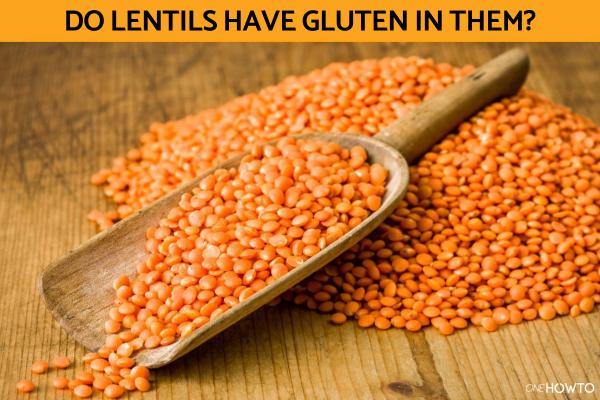
Some people think being gluten free and celiac are the same thing, but this is not the case. Many people are gluten free because they want to lose weight or have a diet modified for certain activities. Gluten can be difficult to digest. While this provides slow-release energy, it can also make people sluggish during digestion. Someone who is celiac has a severe autoimmune disorder which causes their body to produce an abnormally strong immune response when exposed to gluten. This can have serious acute effects, but can also affect their organism over the long term. A gluten-free diet is the only effective treatment for celia disease, which is why oneHOWTO asks do lentils have gluten in them? Knowing the answer can help celiacs better control their diet.
Do lentils naturally contain gluten?
Legumes are naturally gluten-free foods. Among others, lentils, chickpeas, peas, broad beans, soybeans and kidney beans are all considered types of legumes. You may not see that a packet of lentils has the term ‘gluten free’ on their packaging. This is because regulatory bodies do not necessarily demand they carry such labels. However, if you look at the ingredients, you should see whether the product contains gluten in the list.
Sometimes packets of lentils may not be gluten free. This could be because they are packaged in factories which have exposure to gluten. It may also be that the lentils contain other ingredients which do contain gluten. For this reason, people with celiac disease need to be very careful when choosing their food products. We explain more about this in the next section.
Learn more about the composition of these legumes with our article asking are lentils fattening?
Can lentils contain gluten?
After clarifying that lentils do not naturally contain gluten, it's also important to explain that they are not always gluten free. Legumes are grown in rotation with cereal crops such as barley, wheat or rye, allowing for the possibility of cereal seeds planted the previous season growing among the legume plants.
Shared agricultural machinery (such as trucks or harvesters) and warehouses are common. Although lentils are naturally gluten-free, these various processes mean there is the possibility of cross-contamination with cereal grains that do contain gluten.
Cross-contamination poses a significant risk to people with celiac disease. Based on our current knowledge of the condition, the only way to treat celiac disease it is by following a strict gluten-free diet. Consuming products with small amounts of gluten is one of the reasons why many celiac patients fail to achieve clinical improvement.
In the legume agricultural industry, various processes are carried out regarding food hygiene. These include sieving, separation by density differences using a densimetric table separator and colorimetric detection. The aim of these processes is reducing the presence of cereal grains in legumes such as lentils.
Despite the exhaustive application of these processes, the absence of cereal grains containing gluten cannot always be guaranteed. This is especially the case in lentils which are smaller in size.

How to eat lentils if you have celiac disease
Since cross-contamination is a possibility when buying lentil products, people suffering from celia disease need to be very careful. At oneHOWTO, we share some tips on what you can do to best ensure your lentils are gluten free before eating them at home or in restaurants:
- Use dried lentils which you can clean: the first thing you should do is visually inspect them, removing any potential wheat grains by hand. Rinse them thoroughly with water to ensure the complete absence of gluten-containing cereal grains in the prepared lentils. Dried lentils can be cleaned and are therefore easier to control for possible gluten.
- Speak to the establishment: if you are eating in a restaurant, canteen or similar collective dining area, it can be difficult to know if there is gluten. Fortunately, restaurants and other establishments are becoming better at catering to celiacs and better know the risks of cross-contamination. Speak to management for reassurance. If they do not seem to know what is required, it may be better to avoid them and go somewhere else to eat.
- Avoid eating lentils in bulk: they are not pre-washed or pre-cooked. The risk of cross-contamination is higher.
- Choose wisely: the brown lentil variety is the most vulnerable to cross-contamination, as its size is very small and it may contain cereal grains containing gluten. You can choose green or red lentils instead. Always use a brand which you trust and be very attentive to labeling.
- Avoid lentils labeled ‘may contain gluten’: some products may appear gluten free, but they do not meet the standard set by regulatory bodies.
Now that you know that lentils are naturally gluten-free and can be suitable for celiacs, you may want to see how they configure into our guide to the best recipes that are high in iron.
If you want to read similar articles to Do Lentils Have Gluten in Them?, we recommend you visit our Food & drink category.